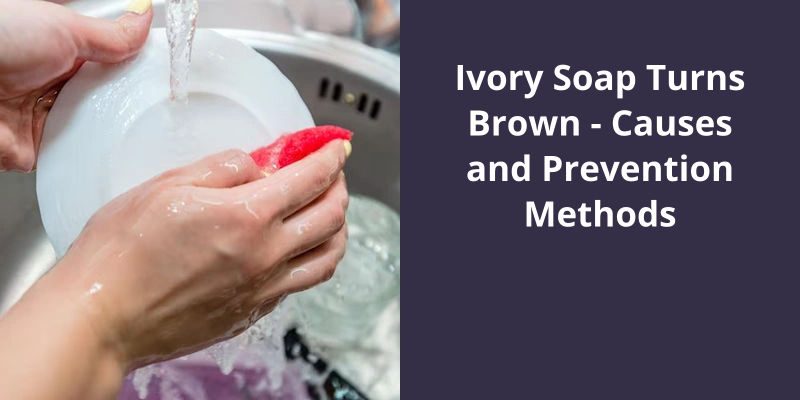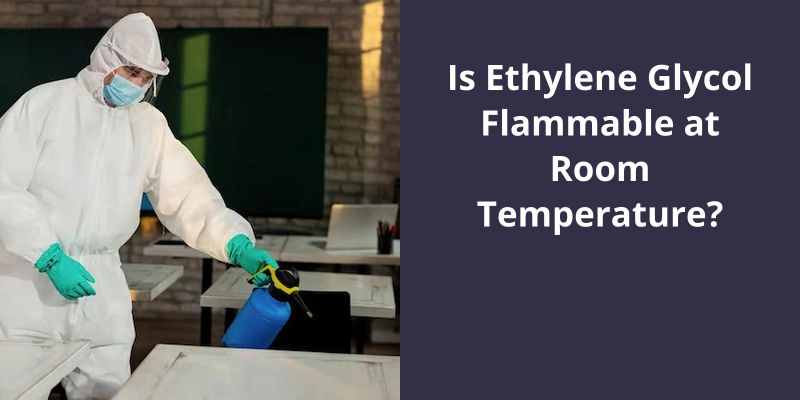Ivory soap can turn brown due to a process called oxidation, often triggered by exposure to air and moisture. It’s important to understand that the brown color does not mean the soap is expired or ineffective. Brown spots or discoloration on Ivory soap usually occur when its fatty acids react with oxygen, which is a normal occurrence. To prevent this, it’s advisable to keep the soap in a cool, dry place away from sunlight, and ensure it’s properly dried off between uses. Using a soap dish with proper drainage can help avoid this issue as well.

Does Soap Change Color as It Cures?
Soap making has been a popular pastime for many people for centuries. It’s a process that involves the careful blending of different oils, fats, and lye to create a unique and useful product. After the mixing and saponification is complete, the soap is left to cure for several weeks. This allows the soap to dry out and harden before it’s ready to use.
One thing that many soap makers have noticed is that their soaps often change color as they cure. This color change can be subtle or dramatic, and may take place over a period of days, weeks, or even months. While there are many factors that can contribute to this color change, one of the most significant is the presence of vanilla in the soap.
Vanilla is a popular ingredient in many soap recipes because it helps to stabilize the scent of essential oils and other fragrance oils. However, it’s also well-known for it’s ability to darken over time. This can be frustrating for soap makers who’ve spent a lot of time and effort creating a beautiful, light-colored soap.
One is to use fragrance oils that don’t contain vanilla. Another is to use a vanilla stabilizer, which is a substance that helps to slow down or prevent the color change. However, these solutions may not be practical or desirable for all soap makers.
It’s important to remember that the color of the soap doesn’t affect it’s cleansing or moisturizing properties, and that dark-colored soaps can still be just as effective as lighter-colored ones.
How to Use Natural Colorants in Soap Making to Achieve a Desired Color.
- Annatto seeds – steep in oil for a yellow-orange color
- Activated charcoal – add to soap batter for gray or black color
- Alkanet root powder – infuse in oil for a purple-red color
- Cocoa powder – mix with soap batter for a brown color
- Indigo powder – mix with lye water for a blue color
- Madder root powder – infuse in oil for a red color
- Spirulina powder – mix with lye water for a green color
- Turmeric powder – steep in oil for a yellow color
As your homemade soap sits and cures, you may start to notice some changes in it’s appearance. One common occurrence is the soap turning darker in the middle and taking on a different texture than when it was first made. However, there’s no need to worry as this is simply a natural part of the soapmaking process.
Why Does Soap Turn Black?
As the soap cools down, it can sometimes cause pockets of the soap to turn darker in color due to differences in temperature distribution throughout the soap bars. While this may look unsightly, it doesn’t affect the quality or performance of the soap in any way.
Another reason why soap may turn black is due to the presence of heavy metals or other impurities in the water or oils used during the soapmaking process. These can react with the soap ingredients and cause discoloration or even a noticeable odor. Using high-quality, pure ingredients and distilled water can help prevent this issue.
This is more likely to occur if the soap is left standing in a moist environment with poor ventilation or if it comes into contact with contaminated surfaces or people. Proper storage and handling practices can also help prevent this issue.
Ultimately, the most important thing is to use high-quality, natural ingredients and follow best practices for soapmaking to ensure that your soap is safe, effective, and visually appealing. With a little bit of care and attention, you can create beautiful, luxurious soap bars that your customers will love.
As we use bars of soap, we may notice a gradual change in color from it’s original shade to a darker brown. While this may be a cause of concern for some, it’s actually a natural occurrence caused by various reactions within the soap’s components. One of the culprits behind the discoloration is vanillin, which is often found in the fragrance of the soap. Keep reading to learn more about why old soap turns brown and what can be done to prevent it.
Why Does Old Soap Turn Brown?
Other components that can cause soap to turn brown include oxidation of fatty acids, reaction with metal ions, and exposure to UV light. Fatty acids are a key component of soap, and when they react with oxygen in the air, they can form free radicals that cause discoloration. Similarly, metal ions such as iron, copper, and manganese can catalyze the oxidation of fatty acids and cause discoloration. Exposure to UV light can also cause discoloration by promoting oxidation reactions.
The discoloration of soap doesn’t affect it’s cleansing ability or it’s performance in any way. However, it can affect the appearance of the soap, making it less appealing to consumers. To prevent discoloration, soap makers may add antioxidants to their formulas to prevent oxidation reactions. They may also avoid using fragrances that contain high levels of vanillin or other discoloring agents.
Now that we know why Ivory soap turns yellow, let’s explore the impact of oxidation and why it happens.
Why Did My Ivory Soap Turn Yellow?
When soap turns yellow, it’s a natural occurrence due to the chemical properties of the soap ingredients. Ivory soap is no exception and can turn yellow over time. This is known as oxidation.
The temperature of the soap can also impact how quickly it will turn yellow. The hotter the soap, the quicker it will oxidize and change color. It’s recommended that soap be stored in a cool, dry place to prolong it’s shelf life and prevent discoloration.
Floating soap like Ivory has air mixed into it, which can also accelerate oxidation. In contrast, hard soaps have less air exposure and therefore oxidize at a slower rate. It’s important to note that the yellow color of soap doesn’t affect it’s cleansing ability or performance.
In summary, the discoloration of Ivory soap is a natural process due to it’s chemical composition.
Now that we’ve discussed the two basic ways to make your soap whiter, let’s dive a bit deeper into each method and explore how to incorporate them into your soap-making process.
How Do You Keep Soap White?
The color of soap can be a crucial aspect for many reasons. A white bar of soap often gives off the impression of cleanliness and purity, which is why it’s preferred for personal care products. There are many ways to keep soap white, but the two most effective methods are adding titanium dioxide and adjusting the recipe to include “whiter” oils.
Adding titanium dioxide to the lye-water mixture is a common way to achieve a white color. It’s crucial to use water-based titanium dioxide for this, as oil-based versions won’t blend with the lye. The amount of TD you need to add to achieve the desired shade will depend on the recipe and the brand of TD you use. Usually, an amount of 0.5% to 1% of the oil weight is enough. It’s essential to add TD slowly and mix thoroughly to avoid clumps.
Harder oils like beef tallow, lard, coconut or palm kernel oil are preferred in soapmaking as they yield whiter soap compared to soft oils like olive oil. However, it’s crucial to check the oils sustainability and ethical sourcing while choosing the ingredients. Additionally, the amount of oil used in the recipe also affects the soaps color. For a whiter bar, the amount of “whiter” oils should be higher in the recipe.
Apart from this, maintaining a clean workspace and using distilled water can also help in achieving a white color. Impurities in the ingredients and environment can cause the soap to have a yellow or brown color. Also, using too much heat while making the soap can cause discoloration. Therefore, keeping the temperature within the range recommended in the recipe can help in achieving a consistent color.
With the right approach, you can make soap that not only looks good but also performs well.
Source: Simple Old Fashioned Hard White Soap Recipes
Conclusion
In conclusion, the darkening of Ivory soap is a natural and expected process caused by various reactions within the components of the soap, particularly the presence of vanillin. It’s important to note that this doesn’t affect the quality or effectiveness of the soap. As consumers, it’s essential to understand the science behind product changes and to trust in the validity of the manufacturing process. The discoloration of Ivory soap serves as a reminder of the high-quality ingredients used and the commitment to natural and organic compounds.





